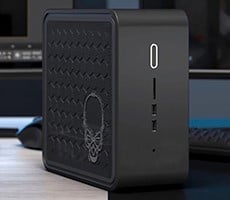Dell XPS 18 Portable All-In-One Desktop Review
At the same time this is happening, increasingly powerful mobile devices are flooding the market, forcing OEM PC makers to respond. There are some who believe tablets are little more than a passing fad destined to become a footnote in the history of tech, but for now, it's the hottest form factor around, and it's cannibalizing computer sales. What's a PC maker to do?
Dell has chosen to combine two trending computing design styles into a single system and call it the XPS 18 Portable All-In-One Desktop. It has all the power of a desktop and some of the portability of a tablet, though let's be clear that Dell isn't pitching you'll want to tote this across town on a train or in other ways that you might use an iPad or Nexus 7. It's portable in the sense that you can snatch up the 18.4-inch Full HD display and lug it from your home office to the living room, plop it on the table, and switch gears from Google Docs to gaming with the kids. Or take it bed for some late night surfing before drifting off to sleep.
Pricing starts at $899 for an XPS 18, though the model we received is a higher-end unit that runs $1,350. It flexes an Intel Core i5 3337U dual-core processor clocked at 1.8GHz (2.7GHz via Turbo), 8GB of DDR3-1600 memory, and a 500GB hard drive paired with a 32GB mSATA solid state drive (SSD) for faster booting and all-around system performance. The main attraction, however, is the portable display, which features an 18.4-inch in-plane switching (IPS) panel, 1920x1080 resolution, and touch support.
You can dock the display on your desk with the included stand or carry it around. At around 5 pounds, it's heavier than a traditional tablet, though it's also much bigger and obviously more powerful. Mixing these two form factors is an interesting concept, but does it work in a design this large? Let's have a look.
|
| Processor | Intel Core i5 3337U Processor |
|
| Operating System | Windows 8 64-bit |
|
| Chipset | Intel Panther Point HM77 Chipset |
|
| Graphics | Intel HD Graphics 4000 |
|
| Memory | 8GB DDR3L 1600 MHz DRAM | |
| Display | 18.4" Full HD 1080p (1920x1080) 16:9; IPS panel |
|
| Storage | 500GB hard drive (5400 RPM) + 32GB mSATA solid state drive (SSD) | |
| Optical | N/A | |
| Networking | Intel Centrino Wireless-N 2230 combo w/ Wi-Di Bluetooth 4.0 |
|
| Interface | 2 x USB 3.0 1 x headphone/microphone combo jack |
|
| Webcam | 720p camera with dual-digital microphone array for Skype |
|
| Battery | 69Whr |
|
| Power Adapter | 65W AC adapter |
|
| Dimensions | 18.25 (W) x 11.17 (D) x 0.69 (H) inches |
|
| Weight | 5.04 pounds |
|
| Manufacturer Warranty | 1-year |
|
| Pricing: | $1,350 (as configured) |
This is also a full fledged Windows 8 machine with touch support. Windows 8, as you're well aware, was designed with touch computing in mind with a user interface that remains consistent among varying types of systems, a trait that works well in a portable AIO setting and usage model.







